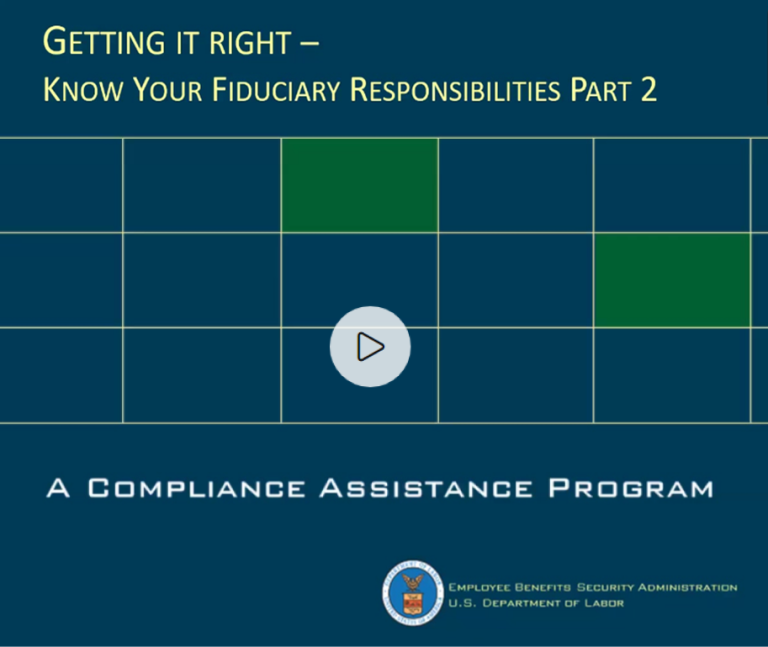If your employees make contributions to your plan through payroll withholding (like in a 401(k) plan), you are responsible for forwarding those contributions to the plan as soon as possible. If your plan has fewer than 100 participants, you should deposit contributions to the plan's trust by the 7th business day after the payday. Delinquent participant contributions can be one of the biggest problems for 401(k) plan sponsors, so you should make sure you have a solid process in place.
Any matching or discretionary contributions that the employer makes to the plan must be deposited into the plan’s trust account as outlined in your plan documents.
Certain transactions aren’t allowed because they may involve conflicts of interest that could harm the plan. The prohibited transaction rules forbid fiduciaries from engaging in transactions involving conflicts of interest or plan insiders, unless they have a special exemption for the transaction from the Department of Labor or in the statute.
The plan can’t be part of a transaction (for example, a sale, lease, or loan) involving a “party in interest.” This is generally a plan insider who has a close relationship to the plan or the plan fiduciary. Parties in interest can include:
- the employer or its owners, employees, and directors,
- plan fiduciaries or employees,
- the plan’s service providers,
- the union, and
- some family members of parties in interest.
There are some exceptions to these rules, but certain conditions must be met. These exceptions are called exemptions, and they may apply to either a class of transactions or one specific transaction. Examples of common exemptions are:
- Service provider exemption: The plan is allowed to hire a service provider if the services are necessary to operate the plan and the compensation is reasonable.
- Participant loan exemption: The plan allows participants to borrow from their 401(k) accounts in some situations.
ERISA outlines basic reporting and disclosure requirements for employee benefit plans. These requirements help make sure plans are operating as they are supposed to. You need to report certain data to the government, and you also need to provide important information to participants and beneficiaries.
Reporting
Plan administrators must report general and financial information about each plan to the Federal government. Most plans – including 401(k) and profit sharing plans – must file the Form 5500 and any required schedules annually, just like a tax filing. However, some small pension plans may be eligible to file a simplified form called a Form 5500–SF if they meet certain conditions. The forms are filed online using the ERISA Filing Acceptance System (EFAST2).
Disclosures
ERISA also requires plan administrators to give plan information to participants and beneficiaries. Although the specific disclosures required depend on the type of plan, key disclosures include:
- Summary plan description (SPD) - a plain language document that explains participants’ rights and responsibilities, the plan’s features, and what to expect from the plan.
- Summary of material modification (SMM) - explains any changes to the plan or to the information in the SPD.
- Individual benefit statement - provides information about account balances and vested benefits, and, for 401(k) and profit sharing plans, also includes illustrations of a participant’s account balance as a lifetime income stream.




